Celebrating the Birthday of Vincent van Gogh
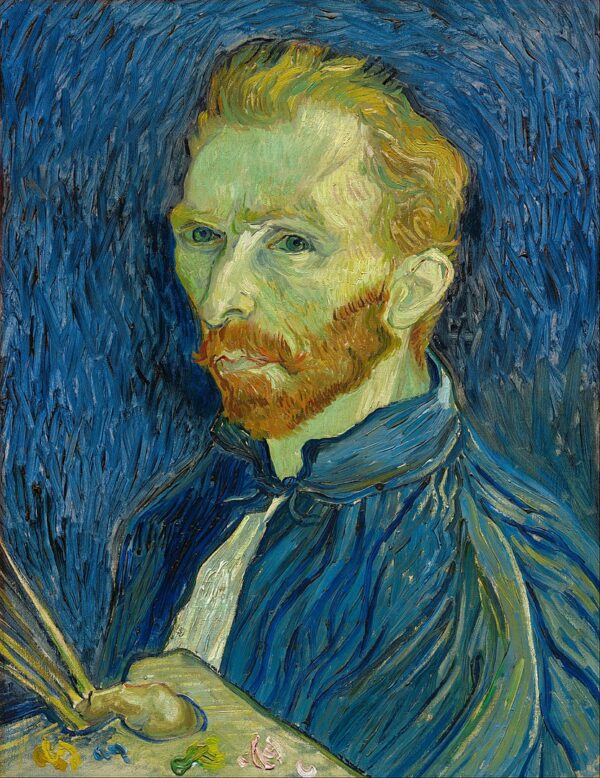
Vincent van Gogh, Self-Portrait, 1889, Oil on Canvas
Today we are celebrating the life and work of one of the world’s most prominent post-impressionist painters, Vincent van Gogh. Born on the 30th of March 1853, Van Gogh grew up in Zundert, a town in the Netherlands, before moving between many more cities in Western Europe as a young adult. Destined to become one of art history’s most iconic figures, Van Gogh’s troubled story, incredible oeuvre and tragic end continues to captivate people to this day.
Van Gogh’s life was filled with complex relationships, struggles with mental health and yet, in spite of these things, the production of an abundance of outstanding artwork. Via a lifelong written correspondence with his brother, we are lucky enough to be able to understand each of these facets in great detail. Today we will take a brief look at Vincent’s early life, family influences, the troubles he faced before his death and the spectacular legacy he left behind.
Early Life and Family Influence
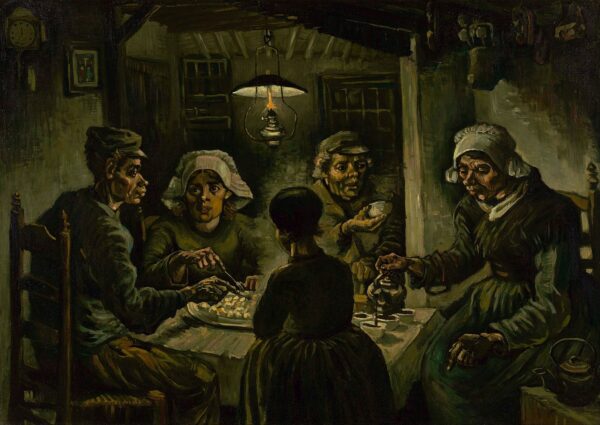
Vincent van Gogh, The Potato Eaters, 1885, Oil on Canvas
Family played a significant role in Van Gogh’s life and an element of tragedy was seemingly present from the start. Exactly a year before his birth, his parents lost a stillborn son who they had named Vincent first. This somewhat macabre replacement style behaviour is believed by many to be the roots of the inner turmoil that Vincent faced throughout his life. Unsurprisingly, it is also understood that his relationship with his parents may have been strained as a result.
On the other hand, Vincent received endless support from other members of his family. His Uncle Cent organised apprenticeships and work for him as Vincent flitted between art and religion. Whilst his brother Theo cared for his emotional and financial needs until his death.
In search of direction, Van Gogh moved between cities in The Netherlands, England and France. Originally having had the opportunity to work for an art dealership in London (set up by his uncle), Vincent tried selling books, preaching and assistant teaching before settling on art (on the advice of Theo) at the age of 27. Despite their disappointment in his final choice, Vincent moved back in with his parents in Nuenen and began to focus on his artistic career.
A Shift in Colour Palette
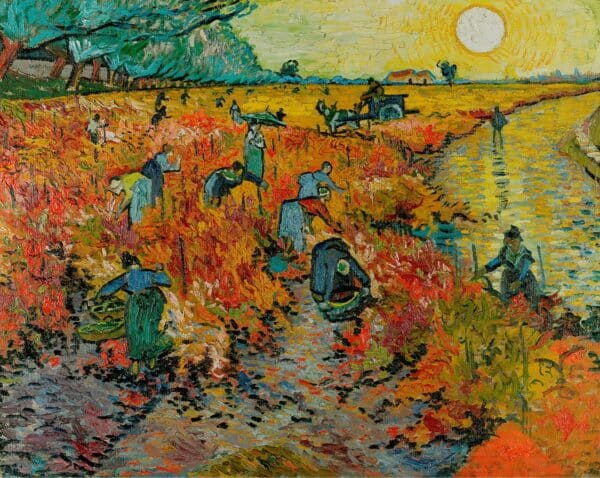
Vincent van Gogh, The Red Vineyard, 1888, Oil on Canvas – the first painting Vincent sold commercially
Common misconceptions about Vincent van Gogh include how he only sold a single painting during his lifetime, that no-one appreciated his work and how he was unrecognised as he lived. However, this isn’t entirely true. In fact, the Van Gogh museum suggests that he sold more than a couple of paintings (a fair few having been traded with other artists), whilst letters from Theo imply a positive reaction to works of Vincent when exhibited in Salons in Paris.
Nevertheless, given his talent and individuality, it was still an unfortunate lack of appreciation.
One of the main reasons for his low rate of sales has been attributed to the muddy colour palette Van Gogh used in his earlier work. The Parisian art scene, in which Van Gogh had hoped his brother Theo would be able to sell his work, was uninterested in the dark, sombres tones and peasant subject matter that Vincent was painting in Nuenen. A key example being The Potato Eaters, an artwork that is now commonly considered to be Vincent’s first masterpiece.
Van Gogh’s initial plan to have Theo sell his work for him shifted and he arrived earlier than expected in the French capital. Once there, everything began to change colour. After witnessing ceiling paintings by Delacroix and the work of Monet and the Impressionists, the horizon’s of Van Gogh’s colour palette dramatically broadened. Today, Van Gogh is known for his use of bright colours, heavy outlines and thick impasto, a style he developed during this time.
Struggles in the South of France
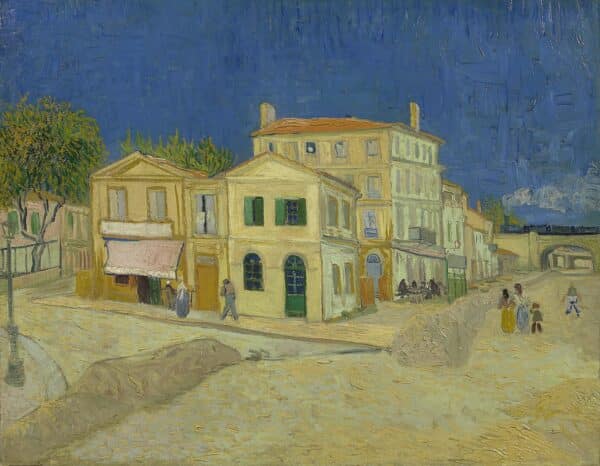
Vincent van Gogh, The Yellow House (The Street), 1888, Oil on Canvas – the house in which Van Gogh and Gaugin lived and worked in Arles
Feeling overwhelmed by Paris, Vincent sought the sun and the countryside to spark inspiration. With the intention of creating a space for artists to live alongside one another, in 1888 he moved to Arles in the South of France. His desire was to group great artists of the time together in the hopes they would invigorate and stimulate each other’s minds and brushes.
Unfortunately, whilst some notable artistic collaboration was achieved, there was only one artist (fellow post-impressionist Paul Gauguin) who stayed with Vincent in Arles. Furthermore, despite his surroundings, Van Gogh was still struggling with his mental health. After a turbulent period living with Gauguin, their time together culminated in conflict and Vincent’s infamous cutting off of his own ear.
Once discharged from hospital Vincent soon returned to painting. However, after only a few months, he voluntarily checked into the Saint-Paul-de-Mausole psychiatric hospital in Saint-Rémy. He spent a year there, during which time his health and mental stability fluctuated. Even still, he painted almost daily and produced some of his most famous pieces. One of these iconic works being the mesmerising oil on canvas Starry Night.
Appreciation After Tragedy
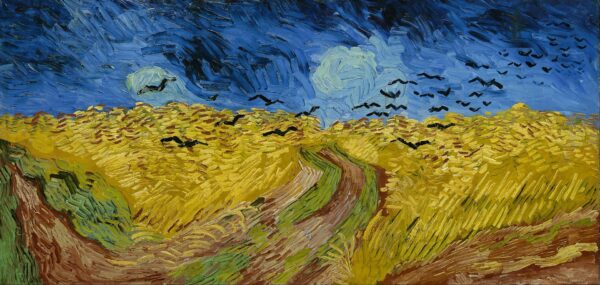
Vincent van Gogh, Wheatfield with Crows, 1890, Oil on Canvas – commonly believed to be Van Gogh’s final painting
After his stay as an inpatient in Provence ended, Van Gogh returned to the North of France. Whilst closer to Paris and to Theo, tragedy in Vincent’s life perpetuated. Although his health seemed to be on an upward trajectory and his creative output persistent, in the saddest of outcomes, Vincent van Gogh died of self-inflicted gun-shot wounds on the 29th of July 1890. Half a year later, his grief stricken brother was to pass away of ill health.
An important figure to bring into focus here is the wife of Theo: Johanna Van Gogh-Bonger. Widowed and with a young baby, Jo deserves a great deal of credit for making Van Gogh and his art, not only known, but revered. She networked with those in the art world, curated and exhibited Vincent’s paintings, sold them to dealers and galleries and collated, translated and published the letters between him and his brother.
Legacy in Blue
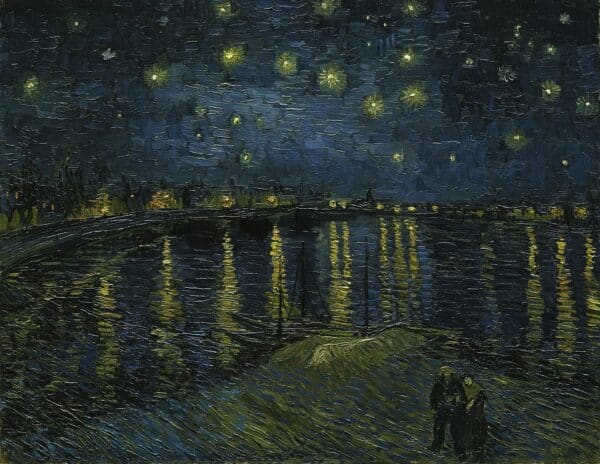
Vincent van Gogh, Starry Night Over the Rhone, 1888, Oil on Canvas
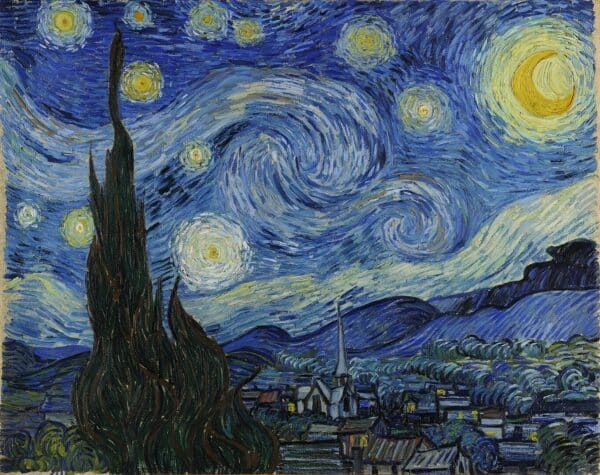
Vincent van Gogh, Starry Night, Paris, Oil on Canvas
Despite the difficulties Van Gogh faced throughout his life, today his artistic legacy is world renowned. His style was expressive, beguiling and unique, meaning Vincent’s paintings are some of the most immediately recognisable in modern art. And amongst the many hundreds he created, blue is frequently the dominant colour.
Dazzling cobalts, rich ultramarines and striking Prussian blues are just some of Van Gogh’s favoured tones that reoccur in many of his self-portraits, landscapes and genre studies. Critics have noted how the colour’s nostalgic and melancholy connotations may reflect the torment and depression Vincent suffered at different points in his life.
Despite the sadness, here at Blue & White, we adore the way Van Gogh used our most favourite colour. His ability to express both undulating emotions and beautiful subject matter effortlessly fills us with nothing but inspiration. As we celebrate Vincent’s life and art, we encourage you to take a look at our collection in the hopes you might find something that sparks such joy in the colour blue!